How Self-Tracking Helped Me Conquer My Bad Shopping Habits
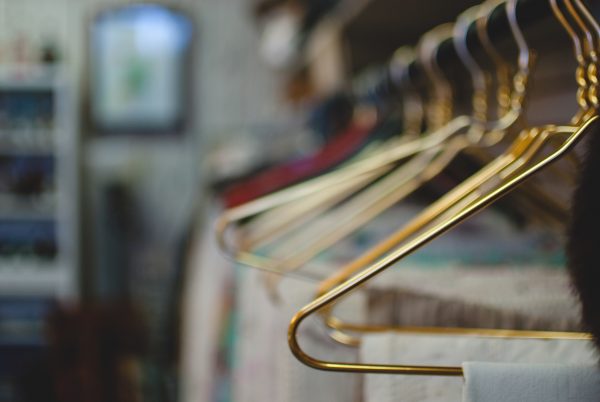
Photo by Caleb Lucas on Unsplash.
For most of my life, I kind of wore whatever looked cute and was on sale. Fashion just wasn’t my thing. When I was 29 I got a job at an ad agency where I found myself surrounded by stylish women draped in minimalist, organic fabrics. My wardrobe of random ModCloth flower print dresses suddenly seemed garish. So I got into fashion — really got into fashion, obsessing over minimalist fashion blogs that enticed me to spend hundreds of dollars on beige linen whatevers.
Quickly, my clothes habit grew out of control, becoming a burden on my budget as well as the main source of clutter in my apartment. When the bar in my closet collapsed under the weight of all my clothes, I knew I had to do something.
Even though I owned a lot of clothes, I suspected that I wore very few of them. I decided to test this assumption. I inventoried my collection in an Excel spreadsheet, listing each item along with some basic details like color and brand. To my horror, I owned an astounding 247 items.
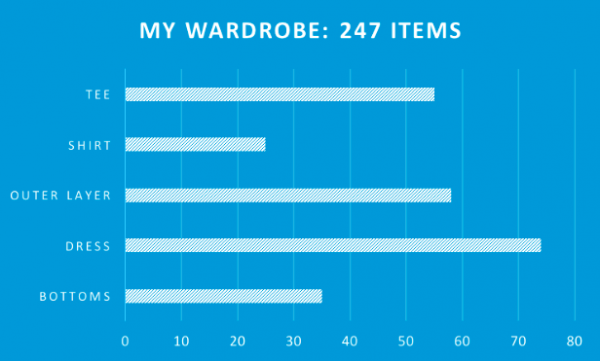
Clearly I had enough clothes! Now I had to figure out how many I needed. I turned my worksheet into a game. For one year I used the inventory as a daily planner, forcing myself to wear each item or toss it. Doing this opened my eyes to what I owned.
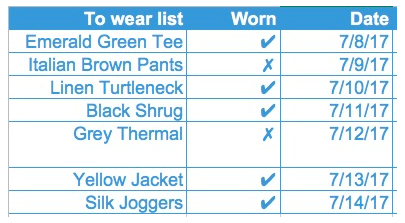
Some items were great, easy keeps. But an alarming number honestly didn’t work for me. Some were difficult to care for, wrinkling easily and requiring dry cleaning. Others didn’t fit well or didn’t breathe well, leaving me so sweaty and uncomfortable that by the end of the day, I couldn’t wait to sell them on eBay or Poshmark. I also forced myself to discard worn-out and damaged items that I was hanging onto for sentimental reasons.
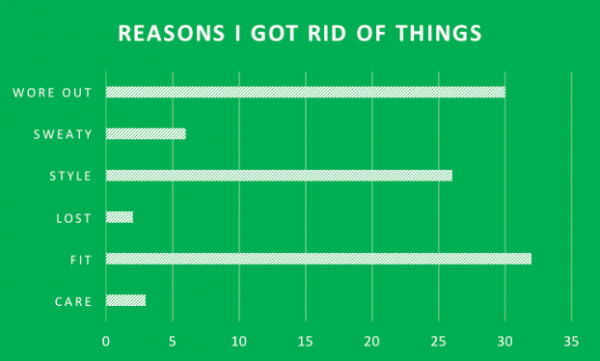
As I tracked, my data revealed I had been right in my hunch. There really were just a few items I wore; the rest, I ignored. This made me think about what those favorite items of mine had in common. I realized that they were comfortable and easy to care for. And the clothes I didn’t wear? Often I loved the idea of them, but wearing them was not a joy.
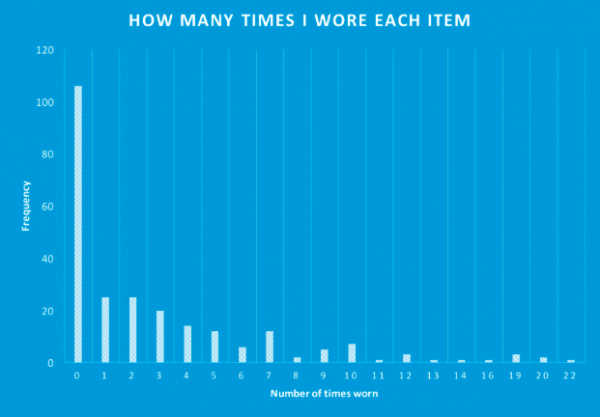
I had so much fun playing this invented game that I cycled through the inventory multiple times, eventually getting rid of almost half of my clothes. Not only did this lighten up my closet, it also changed my perception of clothing and fashion.
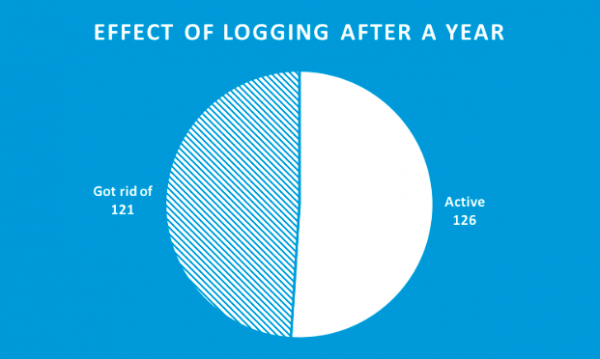
Today, I have a much better sense of my personal style, and I find it easier to resist buying items on impulse in the hope that they would work out. I take satisfaction in owning a smaller number of items that fit comfortably and are easy to maintain. I also take satisfaction in my healthier bank account.
So if clothes are cluttering your closets and pinching your budget, I recommend starting out by simply listing what you currently have. If spreadsheets aren’t your thing, a simple notebook will do. Then check off what you wear. You’ll build a valuable tool that you can use to track what you actually need and what you can toss.
Melissa McEwen started tracking things in Excel as a kid when her dad gave her his old business computer to “play” with. When she’s not updating spreadsheets, you can find her developing software and writing about tech.
Support The Billfold
The Billfold continues to exist thanks to support from our readers. Help us continue to do our work by making a monthly pledge on Patreon or a one-time-only contribution through PayPal.
Comments